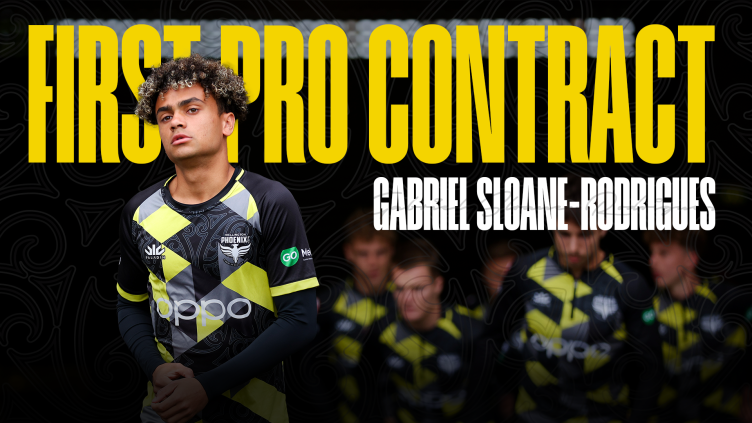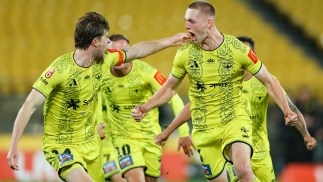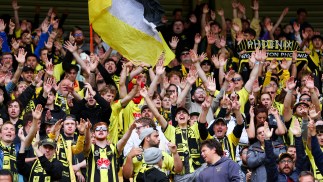Clubs search the world and spend a fortune trying to find players who can fill the gaps. They could save time and money by looking in their own backyard.
Marquee mania delivered, big time, in the opening round of the Hyundai A-League season. Thanks to Alessandro del Piero, Emile Heskey and Shinji Ono, more fans passed through the gate in a single weekend than anytime in history.
Paydirt for those who have paid the big money to get the big names. The turnstiles were humming. The scoreboard? That’s another story.
But if the superstars dominated the headlines, there was another name worthy of special mention from the opening round. Not a big name, but perhaps one of just as much significance: Benjamin Totori.
On a rainswept evening at the “Cake Tin”, the Solomon Islands international arguably had more impact on the game than “ADP”. A reason to hope, against hope, as it happens.
Totori is the first Pacific Islander to be signed by a Hyundai A-League club in six seasons. He’s only the second in the competition’s short history.
“Bonitos” teammate Henry Fa’arodo, who made 11 appearances for Perth Glory in the inaugural season, is the only other Pacific Islander we’ve seen in the Hyundai A-League. It’s a travesty.
That Oceania can be a rich nursery for the competition is a given. Getting the clubs and – more importantly – the coaches, to see it that way is the problem.
Truth is, it’s been a problem for as long as I can remember. Too slight. Too lazy. Too scared. Too naive. I’ve heard it forever.
There’s very little mention of the speed, of the touch, of the innovation, of some of these naturally-gifted footballers. The sort of skills the game here lacks, and needs.
Clubs will search the world, and spend a fortune, trying to find the sort of players who can fill the gaps. They could save themselves a lot of time, and money, by looking in their own backyard.
Funnily enough, there was a Pacific Islander in the ranks when the NSL – the first national sporting competition of any code in the country – was launched back in 1977.
Kenny Kawaleva, a Fijian international, joined Canberra City, and later Brisbane Lions (now Brisbane Roar).
Not many people will remember him, but former Socceroos skipper Tony Henderson, then a Canberra City teammate, does:
“Kenny was super fit and super quick. I remember one day, we were playing against West Adelaide, and they had Graeme Souness. (Coach) Johnny (Warren) put Kenny on him, and Souness didn’t like it one bit. Eventually he elbowed him in the nose, and Kenny was carted off.”
Canberra City’s foresight might have started something, but it didn’t.
Warren, as usual, was years ahead of his time in identifying a potential new stream of talent. In the ensuing years, the region was routinely ignored.
True enough, during the 1980s, football across the South Pacific was mostly disorganised, and development pathways didn’t exist. As a recruiting source, Oceania was easy enough to dismiss.
Things started to change when Tahiti, and the Solomon Islands, participated in their first World Cup campaigns against the Socceroos in 1993 – providing a legitimate shop window.
Tahitian veteran Reynald Temarii subsequently played a handful of matches for Brisbane Strikers, soon followed by the likes of Solomon Islanders Commins Menapi (Sydney United) and Batram Suri (Auckland Kingz), Fijian internationals Esala Masi (Newcastle Breakers), Manoa Masi (Gippsland Falcons), and Junior Sauturaga (Marconi Stallions) and – briefly – Tahitian duo Benoit Michelena and Gerald Quennet (both Wollongong Wolves). While some of these players are remembered fondly, the trickle never became a flood.
It still hasn’t. In fact, despite the genuine progress made by Oceania over the last decade, even that trickle has run dry.
Australia’s departure to Asia in 2005 has prompted our clubs to turn their back on the region, in every sense. Mistake. Totori proved that against Sydney FC, and against their Brazilian fullback Fabio, in particular.
Thanks to generous FIFA grants, the island nations of Oceania are evolving quickly, and closing the gap to New Zealand. Fast.
Just ask Ricki Herbert, who combines his day job with Wellington Phoenix with his role as coach of the All Whites. It was Totori’s three goals in two matches against New Zealand at this year’s Oceania Nations Cup which convinced Herbert to bring him to the Phoenix. There are no regrets.
“Benny is going to make it at this level, I’ve got no doubt about that,” Herbert says.
Hopefully Wellington Phoenix, as the only professional club in Oceania, will start to make up for lost time. The signs suggest they intend to.
Herbert has recently had Vanuatu defender Brian Kaltack on trial, and is keeping a watching brief on his progress. Fact is, if the Phoenix don’t take advantage of their pole position, they’ll miss out. Likewise the rest of the competition.
New Caledonia international Georges Gope-Fenepey has joined French first division side Troyes this season. Tahiti skipper Nicolas Vallar, who’s currently back in Papeete after eight years in the French lower leagues, is being watched again by a number of French clubs. Vanuatu goalkeeper Seiloni Iaruel has just returned to Port Vila after a trial with EPL side Stoke City.
These are all players who could, and perhaps should, be playing in the Hyundai A-League. Even Central Coast Mariners coach Graham Arnold – who has been so outspoken against the number of imports in the competition – acknowledges that Oceania could finally become a fruitful hunting ground. New Caledonia internationals Miguel Kayara and Georges Bearune are both on his radar.
After the recent pre-season trip to Noumea, Arnold said: “I couldn’t believe how much things have improved, they’ve [Oceania] come on leaps and bounds.
“The last time I was involved in Oceania, we were thumping their teams 10 and 20 blot. Now they’re pressing us, they’ve got tactics, they’ve got fitness, they’ve got academies, and the facilities are getting better all the time.
“In the past five years, they’ve probably developed quicker than us. They’re getting a lot of support from FIFA these days, and you can see the results.”
You can only see, of course, if you open your eyes. So keep watching Totori, and consider this. There are plenty more where he came from, and they’re not hard to find.
The views expressed in this article are purely those of the author and do not reflect those of FFA or the Hyundai A-League.



